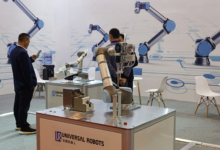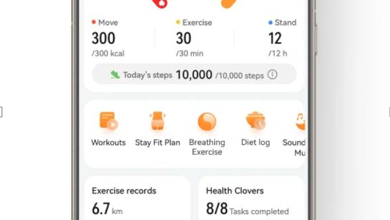Planning Algorithms: Hierarchical Task Network (HTN) Planning — Decomposing Complex Goals into Manageable Sub-Goals for Execution

Imagine an orchestra preparing for a grand symphony. The conductor doesn’t play every instrument but instead guides each musician to contribute their part in harmony. Similarly, Hierarchical Task Network (HTN) Planning works as the conductor of intelligent systems, breaking down large, complex objectives into smaller, achievable actions that can be executed sequentially or concurrently. This process mirrors how humans instinctively plan — by dividing a big dream into smaller, actionable steps.
The Symphony of Structure: Why Hierarchies Matter in AI Planning
In the world of planning algorithms, HTN planning introduces order where chaos could easily reign. Picture a robot assigned to prepare breakfast. The high-level goal — “make breakfast” — can be decomposed into smaller tasks like “toast bread,” “brew coffee,” and “serve meals.” Each of these, in turn, can be further divided into simpler actions like “plug in toaster” or “pour water into coffee maker.”
This hierarchy allows intelligent agents to think like strategists rather than blind executors. Instead of focusing solely on how to perform a single task, they prioritize what to achieve and when. HTN planning, therefore, provides a structured pathway from an abstract goal to tangible execution — much like a project manager breaking down deliverables for a team.
Students exploring the depths of intelligent reasoning through an agentic AI course often find HTN planning to be a cornerstone of goal-oriented system design, where structure meets flexibility in problem-solving.
From Mountains to Molehills: The Art of Decomposition
The beauty of HTN planning lies in its recursive decomposition — transforming a seemingly insurmountable challenge into a sequence of smaller, solvable problems. This mirrors how mountaineers tackle Everest: not by leaping to the summit in one go, but by setting intermediate camps, evaluating weather, and taking one careful step at a time.
In technical terms, each complex task in an HTN plan is broken into subtasks according to predefined methods. These methods encode human-like strategies: if the environment changes, the agent dynamically selects alternative plans. This gives the system adaptability without losing direction.
Such hierarchical reasoning finds real-world applications in robotics, logistics, and automated assistants. For instance, delivery drones use HTN planning to coordinate navigation, obstacle avoidance, and payload management seamlessly. This multi-layered approach ensures that no single decision overwhelms the system.
Professionals taking an agentic AI course can apply these principles to design robust AI systems that mirror human adaptability — capable of adjusting plans in dynamic environments while preserving overall intent.
Designing the Blueprint: How HTN Differs from Classical Planning
Traditional planning algorithms work like solving a flat puzzle — each piece must fit perfectly, and the entire image must be known in advance. HTN planning, however, operates like constructing a modular building. You can design floors, rooms, and walls independently, yet they integrate into one cohesive structure.
Classical planners define goals as states to be achieved, whereas HTN planners define them as tasks to be performed. This distinction transforms the problem space. Instead of asking, “What actions achieve this goal?”, HTN asks, “What series of tasks will realize this objective most efficiently?”
Moreover, HTN’s hierarchical model introduces reusability and abstraction — key principles in software design and AI engineering. Planners can reuse existing task networks for similar goals, saving computational effort and enabling faster adaptation.
In industries like autonomous driving and manufacturing, HTN planning allows systems to switch between strategic (route planning) and tactical (lane changing) levels seamlessly. It provides a bridge between long-term objectives and immediate actions — something purely flat models struggle to achieve.
See also: Thinking Like an Auditor: How CISA Training Changes Your Entire Perspective on Tech
Dynamic Adjustments: Learning to Adapt Through Feedback
One of HTN’s greatest strengths lies in its ability to handle unexpected disruptions. Just as a chef adapts when an ingredient runs out, an intelligent planner adjusts its methods when conditions change. This adaptability makes HTN systems resilient in real-world environments where uncertainty is constant.
For instance, in automated logistics, if a delivery truck faces a roadblock, the system doesn’t panic. It reconfigures its sub-goals — finding a new route or reassigning another vehicle — while keeping the overarching goal intact. HTN’s structured decomposition ensures that changes at one level don’t derail the entire operation.
This layered adaptability aligns perfectly with how humans learn and refine actions. The more feedback the system receives, the better it becomes at optimizing its plans — an essential trait for scalable, intelligent automation.
The Human Connection: HTN Planning as Cognitive Reflection
HTN planning does more than guide machines; it reflects how humans reason through goals. Consider preparing for a marathon. You don’t simply decide to run 42 kilometres. You train daily, plan nutrition, track progress, and adjust routines. Each of these sub-goals contributes to the final achievement. HTN planning encodes this same hierarchical reasoning into artificial agents, making them not just reactive but purpose-driven.
This human-like reasoning model is especially vital in collaborative environments, where AI agents assist people. Whether in smart manufacturing floors or AI-driven tutoring systems, HTN planners provide interpretability — allowing humans to understand why a decision was made. This transparency bridges the trust gap between human operators and AI systems.
Conclusion: Turning Complexity into Clarity
In the ever-expanding realm of intelligent systems, Hierarchical Task Network Planning represents a masterstroke of structured reasoning. By decomposing complex goals into clear, executable sub-goals, it transforms overwhelming challenges into manageable pathways of action. Much like a conductor guiding an orchestra or a strategist leading an army, HTN planning ensures that every part contributes to a unified purpose.
It embodies a core truth about intelligence — whether human or artificial — that clarity of structure is the foundation of creativity. Through its hierarchical elegance, HTN planning teaches systems to think, adapt, and evolve methodically, transforming complexity into harmony one sub-goal at a time.






